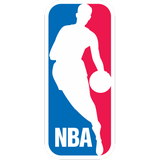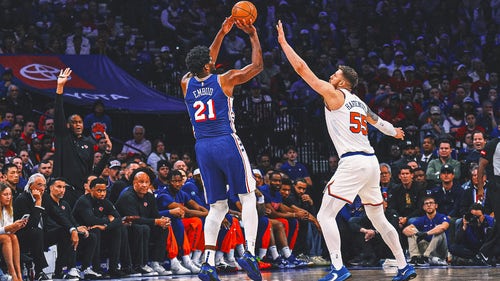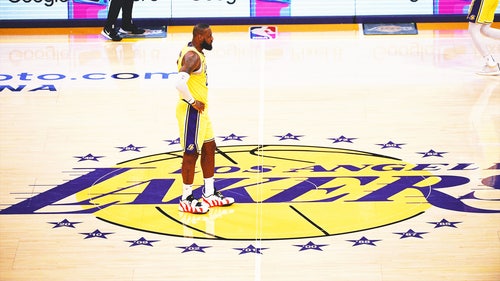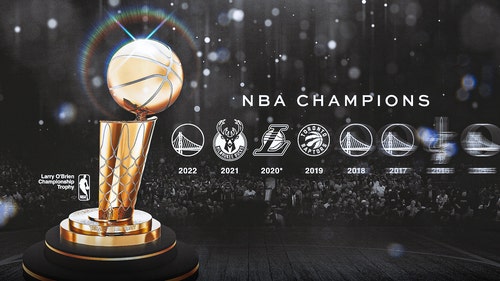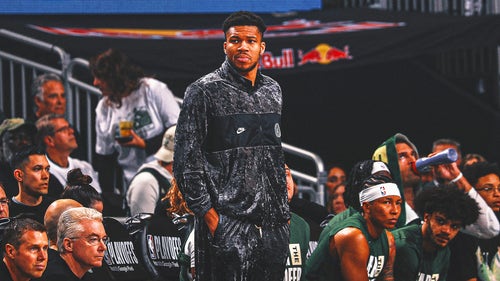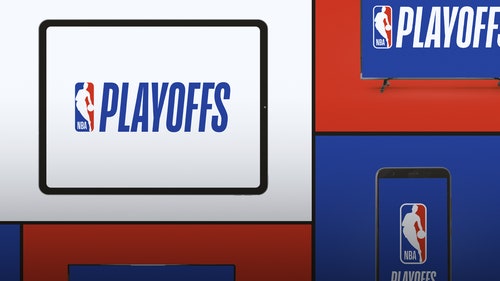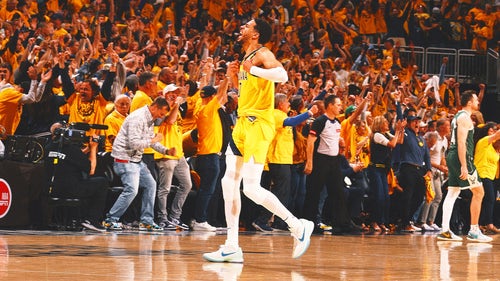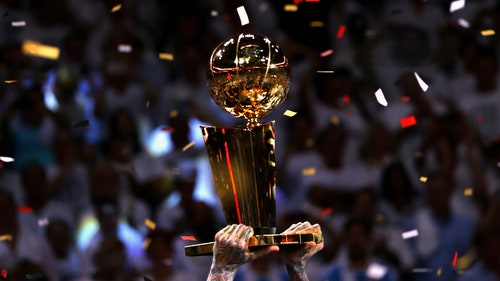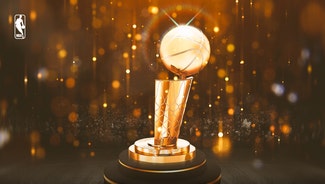
A veteran's guide to getting back in the NBA as a COVID sub
By Ric Bucher
FOX Sports NBA Writer
Here’s a tip to any of the few remaining NBA veterans clamoring to get back into the league: Don’t do it through social media.
"Does it matter?" an Eastern Conference GM said. "Does that kind of nonsense matter? Yes. I need you to come in to fill a roster spot. I don’t need you to be who you think you were when you were taken second in the draft 15 years ago."
That’s a direct reference to — and shot at — Michael Beasley, who was taken second by the Miami Heat in the 2008 NBA Draft. Since the rush began to sign NBA vets to fill the void left by current players quarantined after testing positive for COVID-19, Beasley has been actively promoting himself on Twitter as available and better than he has ever been.
When someone asked, "Beas, what % of the NBA are you still better than? Let’s hear a number," Beasley responded, "A modest 99.9 like Lysol." Unsolicited, he wrote, "Btw, every 10 seconds another person that can’t guard me comes into the word (sic)." Presumably, he meant "world."
If Beasley believes that advertising his confidence after being out of the league the past two-and-a-half seasons is the path to getting back in it, he would be mistaken. Same goes for J.R. Smith and Iman Shumpert, former teammates of LeBron James, boasting on Twitter or a podcast that LeBron knows where to find them and they could be the answer to the Lakers’ woes.
There are a variety of factors that have made certain NBA vets more attractive than others, factors that are considerably different than the ones that might’ve launched their NBA careers. The first? Any vet recognizing that there is a difference has a leg up. This isn’t a job fair; it’s triage. Given a choice, most teams wouldn’t be going down this road.
But after all the players cut in training camp were brought back and the top 20 G League players were snapped up, teams were left in search of players with the inherent knowledge and fitness level to step off a plane and play a three-minute stint in an NBA game without looking lost or out of breath.
"Reliability — that’s what teams are looking for," the Eastern Conference GM said. "The learning curve is shortened. They want a vet who knows, when Horns Up or Horns Twist is called, where to go and what to do. A coach doesn’t want to have to teach. And you’re not looking for output. You just want to know he’ll be in the right spot, make the right play, make the right pass. With young guys, you don’t know if they’re going to do that."
A second Eastern Conference GM echoed that perspective.
"It’s not about [player] development," he said. "These games count. We’ve still got to go out there and try to win. And the G League is watered down. After the first 15 to 20 guys, there’s not much there."
A vet who understands that he might not play more than three minutes is also more attractive. While a player might have made the league because of his potential and hunger to realize it, now it’s more about his willingness to fit in, rather than stand out. Is J.R. ready to do that after pursuing a collegiate golf career? Is Shump after cutting a rug to win "Dancing With The Stars"?
Being able to contribute without touching the ball is also an advantage. Can you defend? Rebound? Create space simply by being a threat to score? Players such as Beasley and Jamal Crawford, another vet who has yet to be signed, are considered volume shooters, with their ability to score their greatest skill — but they need a steady diet of touches to do so.
"High-volume guys who need the ball and want to score, short-term, messes up whatever flow your team has," an Eastern Conference scout said. "Most [teams] don’t want to deal with that or the personalities that go with them."
That explains why career role players — including Davon Reed, Stanley Johnson, Langston Galloway, Alfonzo McKinnie and Justin Robinson — were the first NBA vets signed. Coming off the bench in a complementary role requires both a different skill and a different mindset than being a starter or big-minutes sub. Efficiency is far more important than overall production.
A coach or GM accepts that a role player, particularly one signed in a pinch, is probably going to be a minus in the overall picture; they’re simply looking for someone who minimizes the size of the deficit he creates.
"I don’t need you to go 1-for-12 … because I know you’re not going to be able to stop anybody at the other end of the floor," the first Eastern Conference GM said. "I know you’re going to get torched, so do it quietly."
There’s also an "it’s not what you know but who you know" aspect. Having played for a coach whose current team is in need of a player at your position is a major advantage. When a roster spot needs to be filled, a GM or team president will usually go to his head coach with a list of available players who fit the criteria to see if he has a preference.
As long as the previous experience wasn’t troubled, a coach will typically take a less talented player they know over a potentially better player they’ve never coached. Brandon Knight, signed by the Dallas Mavericks, had played for head coach Jason Kidd in Milwaukee. Lance Stephenson, signed by the Atlanta Hawks, had played for head coach Nate McMillan. Ersan Ilyasova, signed by the Chicago Bulls, had played for head coach Billy Donovan in Oklahoma City.
Mario Chalmers was in the same boat as Beasley until Friday. At 35 years old and out of the league since 2018, Chalmers signed with the G League’s Grand Rapids Gold in hopes it would lead to his being called back up to the NBA. As a two-time NBA champion, he couldn’t understand why he hadn’t drawn any interest and finally tweeted: "When u love something so much it hurts when u can’t just go get it….no matter the work u put in no matter wat u say and no matter wat u do if one person or player don’t like u for a reason Only God knows then that team gonna look over you whether they need u or not…..POLITICS."
Chalmers then posted a short video of himself working out with Beasley and John Wall to display their readiness to play.
A second tip for NBA vets clamoring to get back into the league: Workout videos aren’t considered proof of anything. Certainly not over what scouts see in person — which, in Chalmers' case, was apparently an underwhelming performance at the G League Showcase.
"Mario was out of shape and bad in the Showcase," one scout said.
But the relationship factor, combined with desperation on the part of the Heat, overcame even that. Chalmers was never viewed as difficult in his first seven years in Miami or his last two in Memphis. Cleveland Cavaliers coach JB Bickerstaff coached Chalmers when they were both with the Grizzlies and speaks highly of him.
That, combined with the Heat missing 13 players due to injury or health and safety protocols — 14 if you include Jimmy Butler, who is day-to-day with a sprained ankle — finally earned Chalmers a spot.
There’s a lesson for current NBA players to learn from all this: Cultivate relationships now, when your place in the league is secure. Because one day it won’t be. Cultivate them now, when you don’t need them. Because one day you will.
Along with: Don't treat Twitter as a job board.
Ric Bucher is an NBA writer for FOX Sports. He previously wrote for Bleacher Report, ESPN The Magazine and The Washington Post and has written two books, "Rebound," the story of NBA forward Brian Grant’s battle with young onset Parkinson’s, and "Yao: A Life In Two Worlds," the story of NBA center Yao Ming. He also has a daily podcast, "On The Ball with Ric Bucher." Follow him on Twitter @RicBucher.
